EuropeOn is a member of the Platform for E-Mobility, uniting over 40 members striving towards the electrification of transport, and which has been active ahead of the revision of the Alternative fuels Infrastructure Directive (AFID). The latter will be the main piece of legislation for mobility charging infrastructure for the years ahead. And what years those will be. E-mobility has seen a dramatic rise in the last years and months, which is expected to pick up speed going forward.
Indeed, the first thing to consider is that the new AFID cannot be written to regulate the existing e-mobility market, but should look ahead at the converging projections of car makers, sectoral and institutional stakeholders and NGOs, all predicting an exponential increase in transport electrification by 2030. The Commission is counting on 30 million EVs on the road by 2030 – this is more than 10 times the current EV fleet. It is also aiming for the deployment of 1 million public charging points by 2025 to match this growth.
However, what we are contemplating here is not just an increase in the shares of EVs but the start of an overhaul of our transport system needed to attain climate neutrality in time, towards clean and renewable energy. This paradigm shift needs to be kickstarted now as the e-mobility market is ready respond to this challenge. Hence, the Platform has released a set of recommendations ahead of this revision.
First, the foreseen growth of e-mobility calls for an extension of AFID. This can just be seen as an update following the last developments in the e-mobility ecosystem. This entails providing for electric heavy-duty vehicles (trucks & lorries) which need specific charging infrastructure, updating the definition of charging points based on their power, and match this level of ambition for private charging as well (in the upcoming revision of the Energy Performance of Buildings Directive).
Then, a key component of this revision and extension must be mandatory targets for publicly accessible charging infrastructure. The previous version left it to the Member States to decide how many charging points were to be installed but this is clearly not sufficient and binding targets are now needed to ensure that the growing EV fleet can rely on a wide network of charging stations. This counts for all modes of transport such as heavy and light duty vehicles, but also maritime with shore-side electricity for docked ships. Minimum targets must also ensure the sound coverage of European transport networks to alleviate range anxiety and provide for seamless zero-emission travel across Europe.
While system operators seem ready to integrate EVs in their systems, smart charging should still be incentivised to support power grids and minimise needs for network investment. AFID should introduce a reference definition of smart charging. Besides, public charging points (above 22kW) should be smart and future-proof. Charging infrastructure should also be interoperable and we need a harmonised framework for product and security requirements for charging and data exchange at the different interfaces.
Finally, what the new Alternative Fuels Infrastructure Directive really need is to change from Directive to Regulation. This legislative manoeuvre can be quite impactful as the EU measure would then be directly applicable in member states without having to be transposed in national legislation.
Read the Platform for E-mobility’s AFID paper here.
